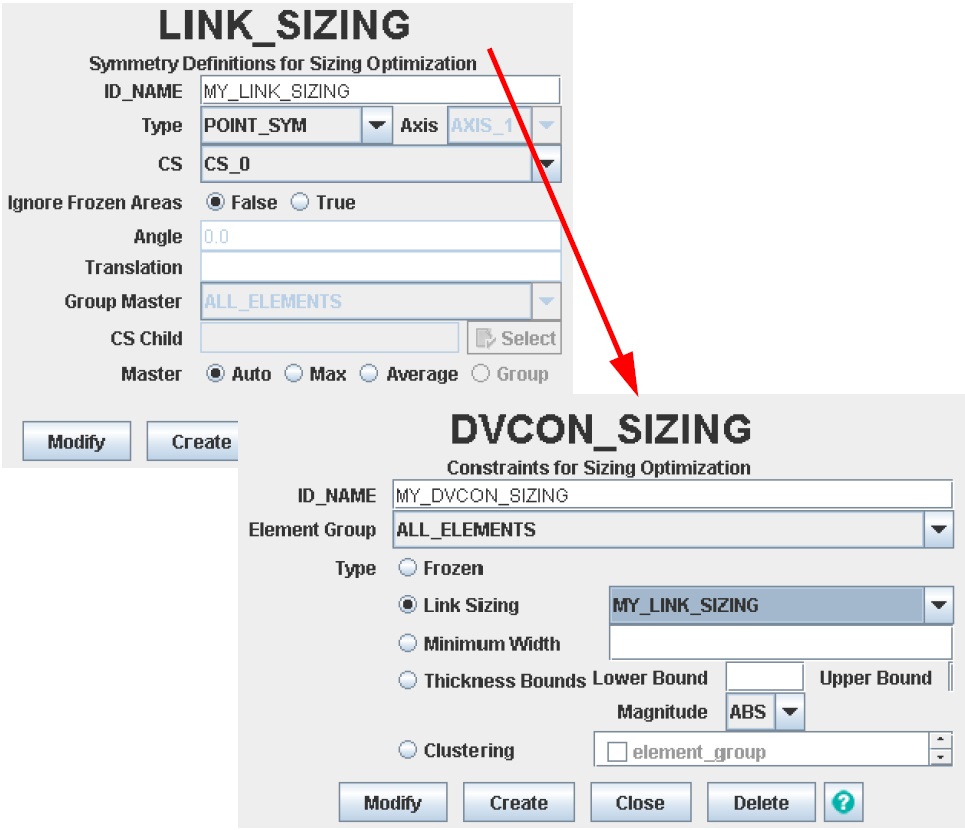Define the Symmetry Condition in Tosca Structure.gui
- Choose Command | LINK_SIZING in Tosca Structure.pre screen.
-
In the LINK_SIZING dialog, define the
type of symmetry, the coordinate system and, if necessary, the rotation
angle (in case of rotation symmetry) or the translation distance (in
case of cyclic symmetry). The symmetry definition can also be extended
to frozen areas by selecting the corresponding checkbox.
The frozen elements of one area are also considered as frozen for the linked areas, if the
Frozencheckbox is checked. - Choose Command | DVCON_SIZING.
-
In the DVCON_SIZING dialog, apply the defined symmetry condition as Type = Link Sizing.


